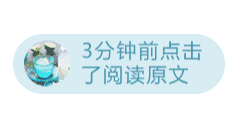点击蓝字
关注我们
一、定义
queue是一种容器转换器模板,调用#include< queue>即可使用队列类。
二、queue初始化
queue<Type, Container> (<数据类型,容器类型>)
初始化时必须要有数据类型,容器可省略,省略时则默认为deque 类型
初始化示例
queue<int>q1;
queue<double>q2;
queue<char>q3;
//默认为用deque容器实现的queue;queue<char, list<char>>q1;
//用list容器实现的queue
queue<int, deque<int>>q2;
//用deque容器实现的queue注意:不能用vector容器初始化queue
因为queue转换器要求容器支持front()、back()、push_back()及 pop_front(),说明queue的数据从容器后端入栈而从前端出栈。所以可以使用deque(double-ended queue,双端队列)和list对queue初始化,而vector因其缺少pop_front(),不能用于queue。
二、queue常用函数
1、常用函数
push() 在队尾插入一个元素
pop() 删除队列第一个元素
size() 返回队列中元素个数
empty() 如果队列空则返回true
front() 返回队列中的第一个元素
back() 返回队列中最后一个元素
2、函数运用示例
1)push()在队尾插入一个元素
queue <string> q;
q.push("first");
q.push("second");
cout<<q.front()<<endl;输出 first
2)pop() 将队列中最靠前位置的元素删除,没有返回值
queue <string> q;
q.push("first");
q.push("second");
q.pop();
cout<<q.front()<<endl;输出 second 因为 first 已经被pop()函数删掉了
3)size() 返回队列中元素个数
queue <string> q;
q.push("first");
q.push("second");
cout<<q.size()<<endl;输出2,因为队列中有两个元素
4)empty() 如果队列空则返回true
queue <string> q;
cout<<q.empty()<<endl;
q.push("first");
q.push("second");
cout<<q.empty()<<endl;分别输出1和0
最开始队列为空,返回值为1(ture);
插入两个元素后,队列不为空,返回值为0(false);
5)front() 返回队列中的第一个元素
queue <string> q;
q.push("first");
q.push("second");
cout<<q.front()<<endl;
q.pop();
cout<<q.front()<<endl;第一行输出first;
第二行输出second,因为pop()已经将first删除了
6)back() 返回队列中最后一个元素
queue <string> q;
q.push("first");
q.push("second");
cout<<q.back()<<endl;输出最后一个元素second
*声明:本文于网络整理,版权归原作者所有,如来源信息有误或侵犯权益,请联系我们删除或授权事宜。
戳“阅读原文”我们一起进步


